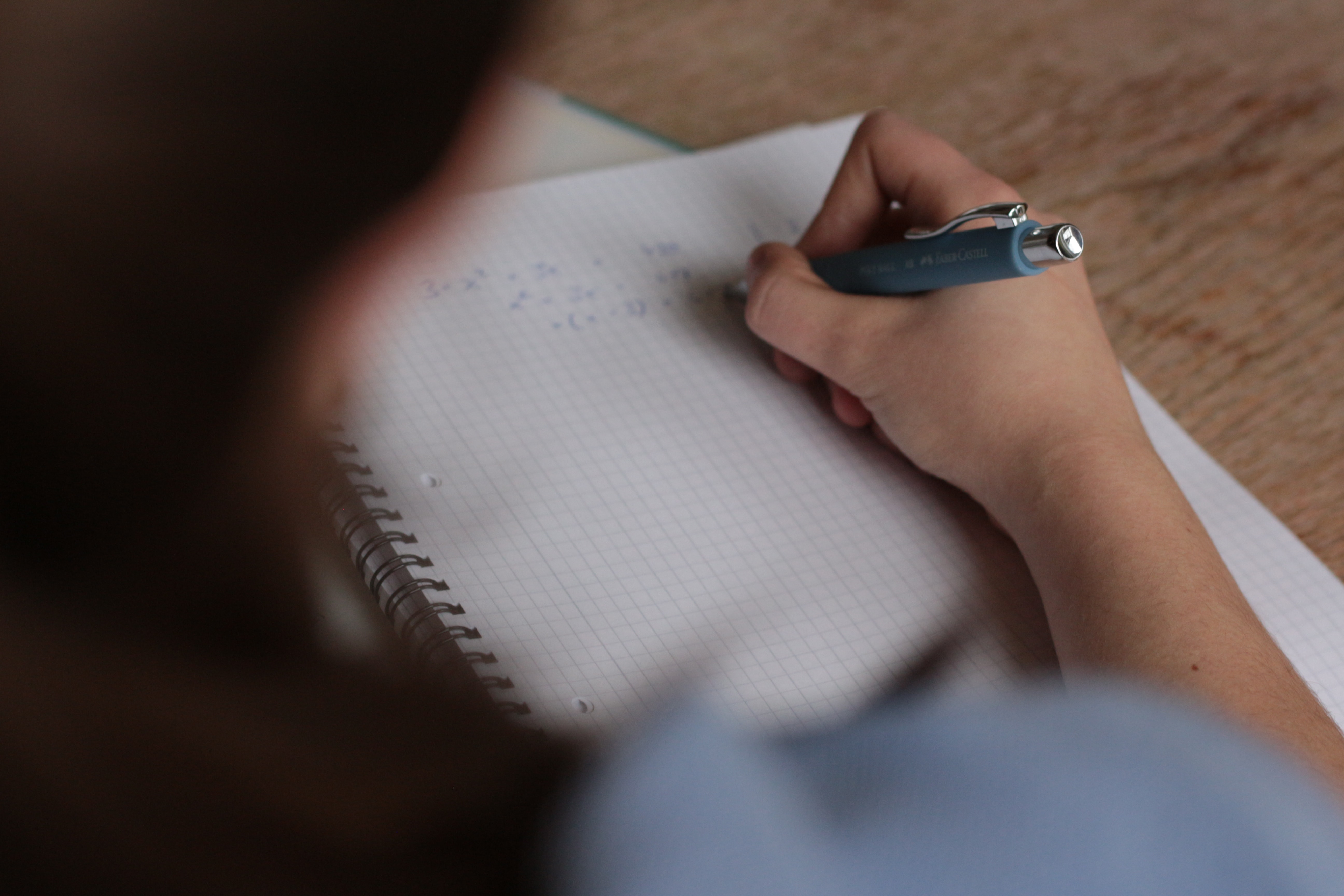Kapanlagi.com - In a conversation or a written text, there must be something called a sentence. The meaning of a sentence itself is a word or a series of words that can stand alone and express a complete meaning. Thus, it can be said that a sentence is a combination of words to express something.
Whether it is an expression in the form of direct speech or in the form of a sentence. KLovers know the meaning of sentences, KLovers also need to know what types of sentences and patterns exist in a sentence. Yes, in every language there is a unique pattern in making sentences, including Indonesian.
Therefore, from various sources, here is the meaning of sentences that KLovers can know and understand along with the types of sentences and also patterns in a sentence. Let's check it out, KLovers.
1. Understanding Sentences

Illustration (credit: Pexels)
As previously explained, the meaning of a sentence is a word or a string of words that can stand alone and express a complete meaning. In other words, a sentence is a language unit consisting of a word or a string of words that can stand alone and express a complete meaning.
According to the Great Indonesian Dictionary (KBBI), a sentence is a language unit that relatively stands alone, has a final intonation pattern, and actually or potentially consists of clauses. Sentences are used to express complete thoughts through speech and writing.
In oral form, a sentence is marked by the rhythm of the voice, the loudness and softness of the sound, interspersed with pauses, and ending with a final tone. Meanwhile, in written form, a sentence begins with a capital letter and ends with a period, exclamation mark, or question mark.
2. Types of Sentences

Illustration (credit: Pexels)
Not only do KLovers need to know the meaning of sentences, they also need to know the types of sentences. There are four types of sentences that KLovers can learn and understand. First, there are types of sentences based on pronunciation, then there are types of sentences based on phrases, types of sentences based on content or function, and types of sentences based on sentence elements. Here is an explanation of the types of sentences:
1. Types of Sentences Based on Pronunciation
- Direct Sentences
The meaning of a direct sentence is a sentence that is a quotation of someone's speech without any intermediaries and without changing anything that is stated. This sentence is marked by the use of quotation marks (") to distinguish between a quoted sentence and an explanatory sentence.
- Indirect Sentences
The meaning of an indirect sentence is a sentence that retells the content or essence of someone's speech without having to quote the entire sentence.
2. Types of Sentences Based on the Number of Phrases
- Single Sentences
The meaning of a single sentence is a sentence that consists of only one clause, which is formed from one pattern.
- Compound Sentences
The meaning of a compound sentence is a sentence that consists of two or more single sentences that are related to each other. Based on the position of one single sentence with another, compound sentences are divided into three types, namely coordinate, subordinate, and mixed sentences.
3. Types of Sentences Based on Content
- Statement or Declaration Sentence (Declarative Sentence)
The meaning of a statement sentence is a type of sentence that aims to convey information. This sentence is written with a period (.) at the end. In reading, at the end of the sentence, it usually has a falling intonation.
- Question Sentence (Interrogative Sentence)
The meaning of a question sentence is a sentence used to find out information or answers or responses from the interlocutor. This sentence is written with a question mark (?) at the end.
- Command Sentence (Imperative Sentence)
The meaning of a command sentence is a sentence that aims to give orders to someone to do something. In writing, the command sentence will end with an exclamation mark (!). Then in reading, at the end of the sentence, a rising intonation is usually used.
- Exclamation Sentence
The meaning of an exclamation sentence is used to express feelings. Same as the command sentence, in pronunciation, at the end of the sentence, it is usually marked with a high intonation. In writing, the exclamation sentence also ends with an exclamation mark (!).
- Hypothetical Sentence
The meaning of a hypothetical sentence aims to describe the desires or goals of the writer or speaker that have not yet or have not been realized. Hypothetical sentences are written with a period (.) at the end.
4. Types of Sentences Based on Elements
- Complete Sentence
The meaning of a complete sentence is a sentence that consists of at least a subject and a predicate. Figurative sentences can be categorized as complete sentences.
- Incomplete Sentence
The meaning of an incomplete sentence is a sentence that is not complete. Sentences with an incomplete form sometimes only have a subject, a predicate, or even only consist of an object and an adverb. This sentence is usually used for slogans, greetings, commands, questions, invitations, answers, calls, prohibitions, greetings, and admiration.
Just like imperative sentences, in its pronunciation at the end of the sentence, it is usually marked with a high intonation. In its writing, an exclamation mark (!) is also used to end an exclamation sentence.
- Hypothetical Sentences
The meaning of a hypothetical sentence aims to describe the desires or goals of the writer or speaker that have not yet been fulfilled or are not fulfilled. Hypothetical sentences end with a period (.).
4. Types of Sentences Based on Elements
- Complete Sentences
The meaning of a complete sentence is a sentence that consists of at least a subject and a predicate. Figurative sentences can be categorized as complete sentences.
- Incomplete Sentences
The meaning of an incomplete sentence is a sentence that is not perfect. A sentence with an imperfect form sometimes only has a subject, a predicate, or even consists only of an object and an adverbial. This sentence is usually used for slogans, greetings, commands, questions, invitations, answers, exclamations, prohibitions, greetings, and admiration.
3. Patterns in Sentences

Illustration (credit: Pexels)
In constructing sentences, you must use patterns so that the sentences you create can be understood. And there is an explanation about sentence patterns that KLovers can learn and understand. And here is an explanation about sentence patterns that KLovers can learn and understand:
1. Basic Sentence with S P Pattern
This basic type of sentence has a subject and predicate. The predicate of the sentence for this type can be a verb, noun, adjective, or numeral.
2. Basic Sentence with S P O Pattern
This basic type of sentence has a subject, predicate, and object. The subject is a noun or nominal phrase, the predicate is a transitive verb, and the object is a noun or nominal phrase.
3. Basic Sentence with S P Complement Pattern
This basic type of sentence has a subject, predicate, and complement. The subject is a noun or nominal phrase, the predicate is an intransitive verb or adjective, and the complement is a noun or adjective.
4. Basic Sentence with S P O Complement Pattern
This basic type of sentence has a subject, predicate, object, and complement. The subject is a noun or nominal phrase, the predicate is a transitive verb, the object is a noun or nominal phrase, and the complement is a noun or nominal phrase.
5. Basic Sentence with S P Modifier Pattern
This basic type of sentence has a subject, predicate, and must have a modifier because it is required by the predicate. The subject is a noun or nominal phrase, the predicate is an intransitive verb, and the modifier is a prepositional phrase.
6. Basic Sentence with S P O Modifier Pattern
This basic type of sentence has a subject, predicate, object, and modifier. The subject is a noun or noun phrase, the predicate is a transitive verb, the object is a noun or noun phrase, and the modifier is a prepositional phrase.
7. Basic Sentence Pattern S P Comp.
This basic sentence pattern consists of a subject, predicate, complement, and modifier. The subject is a noun or noun phrase, the predicate is an intransitive verb or adjective, the complement is a noun or adjective, and the modifier is a prepositional phrase.
8. Basic Sentence Pattern S P O Comp.
This basic sentence pattern consists of a subject, predicate, object, complement, and modifier. The subject is a noun or noun phrase, the predicate is an intransitive verb, the object is a noun or noun phrase, the complement is a noun or noun phrase, and the modifier is a prepositional phrase.
That is the explanation of the meaning of sentences that KLovers can understand and comprehend along with the types of sentences and patterns in a sentence.
(kpl/gen/dhm)
Disclaimer: This translation from Bahasa Indonesia to English has been generated by Artificial Intelligence.















